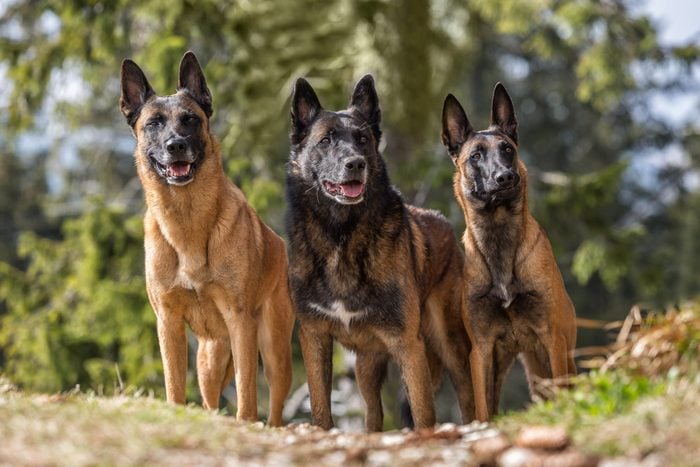
The world’s healthiest dog breeds
Pet parents have control over many things that affect dog health, including nutrition, exercise, mental well-being and veterinary care. But what about genetics? If you’re looking to add a new furry friend to your family, picking a dog from this list of the healthiest dog breeds can stack the genetic deck in your favor.
Identifying the healthiest dog breeds requires some finesse. We can’t just look at longevity, for example, because small dogs generally tend to live longer than large dogs—and a 16-year-old Chihuahua isn’t necessarily healthier than a 12-year-old golden retriever. And, of course, certain individuals will always buck their breed’s trend.
In putting together this list, I’ve combined breed research and what I’ve learned in more than 25 years of being a veterinarian. Vets usually see the most popular dog breeds on this list for routine preventive care and not much else, even when the dogs get quite old. Read on to see which dogs made my list of the 20 of the healthiest breeds with the fewest medical problems.
Get Reader’s Digest’s Read Up newsletter for more pets, cleaning, humor, travel, tech and fun facts all week long.
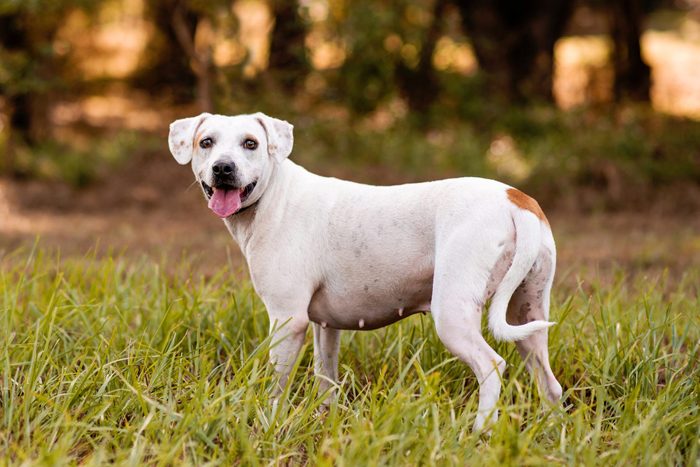
Mixed breed
True mutts are often extremely healthy, but all mixed breeds aren’t created equal. Designer dogs, which are often just a combination of two popular breeds, are probably not going to be any healthier than their purebred parents, particularly if the two breeds suffer from the same inherited health problems like hip dysplasia or hypothyroidism.
But dogs that have a truly diverse genetic background can benefit from “hybrid vigor.” Many breed-related diseases occur only when a dog has inherited two copies of a problematic gene—one from each parent. This happens less frequently in mutts because their parents share fewer genes in common. If you meet a dog and struggle to identify a single breed that might be in its heritage, there’s a better-than-average chance that it’s going to be healthy.
You should also be aware that some disorders go with size or conformation, whether the dog is mixed or purebred. For example, small dogs are more likely to have knee problems, big dogs more likely to have hip problems, and flat-faced dogs more likely to have breathing problems, no matter what the breed.

Australian cattle dog
Australian cattle dogs (also called heelers) are medium-sized and tough as nails. They’re also so smart that they’ve earned a reputation for regularly outwitting the people in their lives.
Their life expectancy of 12 to 16 years is longer than average for a dog of their size, but what truly sets them apart is the fact that well-bred Australian cattle dogs tend to be extremely healthy well into their senior years. Injuries can occur, however, because they are so active. These Australian dogs are also at increased risk for musculoskeletal problems like hip and elbow dysplasia, but good breeders will screen for these and other health problems, including several eye issues and deafness that a dog might inherit from its parents.

Beagle
If you are looking for a big dog in a little body, a beagle might be for you. Bred to hunt in packs, beagles tend to be friendly, up for anything and loud. Training a beagle to be quiet is an exercise in futility—you simply can’t undo all those generations of breeding!
Beagles are generally very healthy, but make sure any breeder you work with is willing to provide you with the results of the genetic tests they have run on a puppy’s parents, which should include screenings for hip dysplasia, hypothyroidism, eye problems, heart disease and Musladin-Lueke Syndrome (MLS), according to the Orthopedic Foundation for Animals. If a breeder says these tests aren’t necessary, find another breeder! Also avoid purchasing so-called dwarf or pocket beagles, as they may be suffering from MLS, which can make dogs smaller than normal.
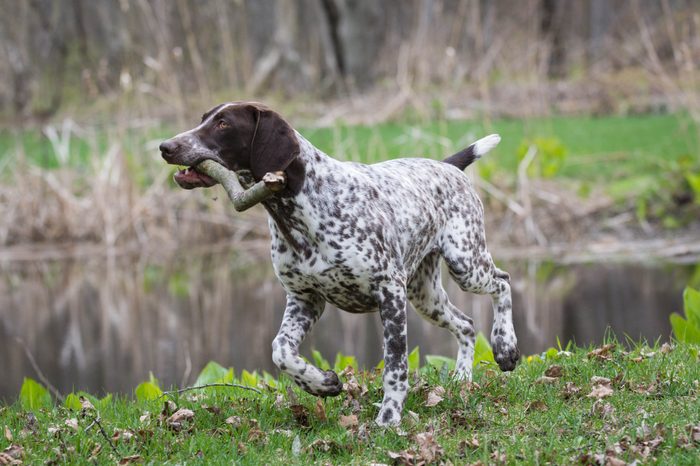
German shorthaired pointer
German shorthaired pointers are extremely versatile. These multipurpose hunting dogs are usually smart, friendly and easy to train—traits that are also desirable in a companion dog, as long as you can provide them with all the exercise they need to burn off their boundless energy.
Health-wise, German shorthaired pointers also tend to lead the pack. As with any purebred, they have an increased risk for certain inherited diseases, including hip and elbow dysplasia, heart disease and eye problems, but good breeders will screen for these conditions prior to including a dog in their breeding program. One disease to be particularly aware of with German shorthaired pointers is cone degeneration, which can lead to light sensitivity and day blindness, but there is a genetic test for it.

Jack Russell terrier
Jack Russell terriers (or terrors, as they’re sometimes called) aren’t for everyone. They are extremely active and willful little dogs, which serves them well when they have a job to do. Conversely, a bored Jack Russell terrier can find no end of trouble to get into.
The American Kennel Club–recognized breed technically goes by the name Parson Russell terrier, but most people still use the more familiar name of Jack Russell terrier. Either way, these dogs often live for 13 to 15 years, and they tend to be very healthy, though the Orthopedic Foundation for Animals recommends testing dogs that are part of a breeding program for eye problems, deafness and patellar luxation (kneecaps that slip out of position). Another thing to note if you’re thinking of making one a part of your family: With their high energy levels and headstrong natures, Jack Russells are also more prone to incurring injuries and having behavioral issues (including aggression).

Papillon
Papillons look like the delicate butterflies they are named after, but in this case, looks are deceiving. These dogs may be tiny and beautiful, but they are still real dogs that can excel as athletes and be great companions for people with an active lifestyle.
Their life expectancy of 14 to 16 years makes them one of the longest-living dog breeds, not to mention one of the healthiest dog breeds. They also have few inherited health problems, but responsible breeders will still screen for conditions like patellar luxation, eye problems and heart disease. And due to a papillon’s small size, pet parents must take special care to protect them from accidental injury, particularly when they are puppies.

Poodle
Poodles come in three sizes. Toy poodles are the smallest, standing 10 inches or less at the shoulder. Miniature poodles fall in the middle and are 10 to 15 inches tall. And standard poodles are the biggest variety, standing at more than 15 inches tall and weighing between 40 and 70 pounds. Despite their fancy appearance, these intelligent dogs were originally bred to help on duck hunts. Pick the size that best fits your lifestyle, and you’ll have a companion that will love to join you on all your adventures.
Poodles are generally quite healthy. However, larger poodles are prone to the health problems that are typically seen in larger dogs, such as gastric dilatation-volvulus (bloat) and hip dysplasia, while toy and miniature poodles are more prone to small-breed conditions like patellar luxation and Legg-Calve-Perthes disease. Breeders should perform all the screening tests recommended by the Orthopedic Foundation for Animals.
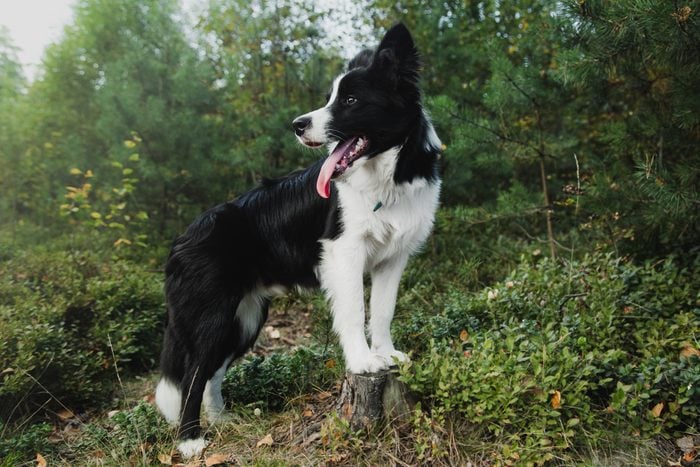
Border collie
Border collies are the epitome of a herding dog—fast, smart and always looking for something to do. The downside of these otherwise wonderful traits is that if border collies become bored (which happens easily), they will find their own entertainment … and their owners may not be pleased with the results.
That said, being bred for an extremely active lifestyle has made border collies a very healthy breed. They have a life expectancy of 12 to 15 years, but like all purebreds, they are at increased risk for several genetic diseases including hip dysplasia, eye problems (including collie eye anomaly), neuronal ceroid lipofuscinosis and trapped neutrophil syndrome. Good breeders will provide prospective owners with a puppy’s parents’ screening tests for these and other health conditions.
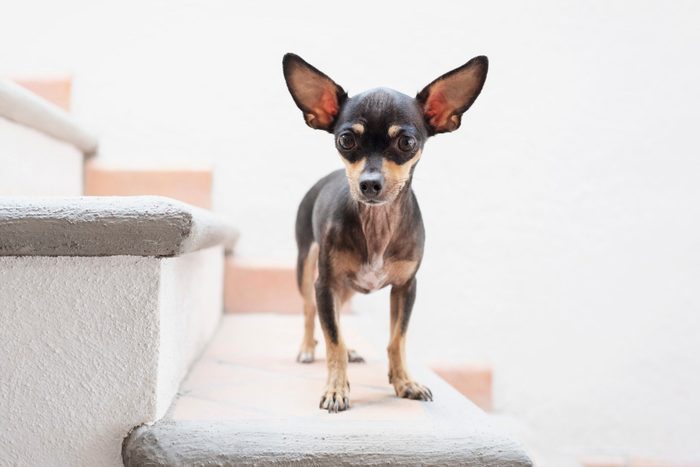
Chihuahua
Chihuahuas are often cited as the dog breed with the longest life expectancy. The American Kennel Club puts it at 14 to 16 years, but I’ve known several who have made it past 18 years. This is due in part to their tiny stature—Chihuahuas shouldn’t weigh any more than 6 pounds.
Many Chihuahuas suffer from (more than) a touch of Napoleon syndrome. They make up for their small size with a big attitude, which can lead to behavior problems, including aggression. And while Chihuahuas often have very long lives, they can develop health problems that are commonly seen in toy breeds such as dental disease and tracheal collapse. The Orthopedic Foundation for Animals recommends screening for heart problems, patellar luxation and conditions affecting the eye, like glaucoma.
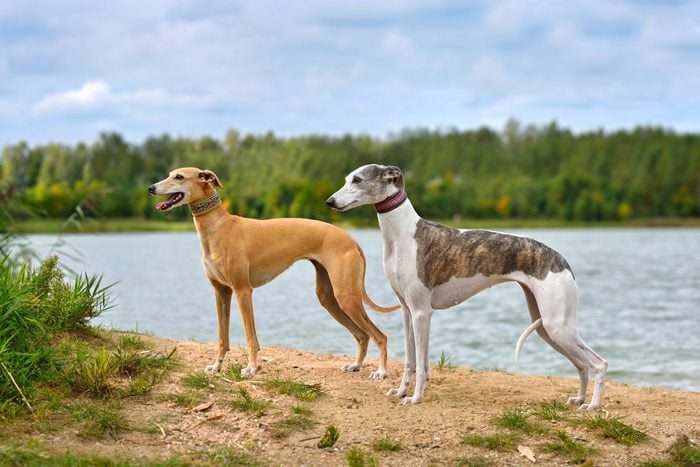
Whippet
Whippets look like a medium-sized version of their larger cousin, the greyhound, and they have many of the same traits. They’re fast and love to run, but when they’re done, their favorite pastime is relaxing with their beloved family members nearby.
Other than needing a place to safely stretch their legs, whippets are easy to care for and tend to be very healthy and quite sturdy despite their graceful appearance. Before being bred, whippets should be screened for eye problems, heart conditions and deafness, and breeders should readily provide you with the results of these and any other tests they perform.

Italian greyhound
Weighing between 7 and 14 pounds, Italian greyhounds have many of the same characteristics as whippets but in an even smaller package. They are playful dogs with a lot of energy but don’t need as much room to run in comparison to whippets and greyhounds. Once they’ve burnt off some steam, Italian greyhounds will happily revert to being a beautiful couch potato.
Italian greyhounds usually have a life span of between 13 and 15 years. The Orthopedic Foundation for Animals recommends screening these Italian dogs for hip conditions (dysplasia and Legg-Calve-Perthes disease), eye problems, hypothyroidism and patellar luxation. Also, Italian greyhounds have delicate legs and should be protected from injuries, particularly when they are puppies.
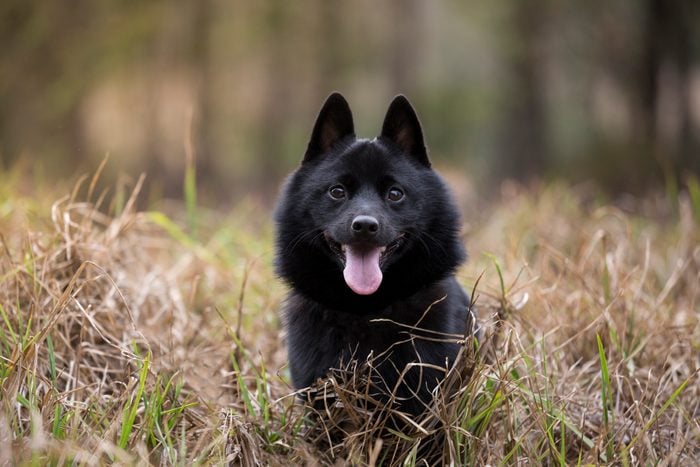
Schipperke
Hard to pronounce in both English (“ski-pr-kee”) and Dutch (“sheep-er-ker”), the schipperke is a tough and confident little dog that was originally bred to hunt rats. They’re known for being smart and for getting into trouble if given half a chance, but if you want a dog that will provide you with hours of entertainment, a schipperke might be a good match.
Schipperkes generally enjoy healthy and active lives and have an expected life span of between 12 and 16 years. Reputable breeders will screen their dogs for eye problems, hip dysplasia, patellar luxation and hypothyroidism. The national breed club also recommends a genetic test for mucopolysaccharidosis Type IIIb, a condition that causes neurologic problems in dogs that carry two copies of the problematic gene.

Tibetan spaniel
Initially used as watchdogs in Tibetan monasteries, Tibetan spaniels are self-confident and somewhat headstrong, which can make training a challenge. However, their lion-like good looks and friendly nature make them a joy to be around.
Flat-faced (brachycephalic) dogs have an increased risk for health problems, particularly those that affect their breathing. While technically a brachycephalic breed, Tibetan spaniels have a slightly more elongated muzzle, which helps keep them healthier than other flat-faced dogs like pugs and bulldogs. Still, it’s important to watch their breathing when they’re being active. As is the case for most small breed dogs, breeders should screen for eye problems and patellar luxation.

Lhasa apso
Consider the Lhasa apso if you’re looking for one of the healthiest dog breeds and don’t mind grooming a long, flowing coat or scheduling regular haircuts for your dog. Lhasas are dignified, somewhat headstrong and tougher than they look. They need only a moderate amount of exercise and are generally happy strolling around the neighborhood.
Unfortunately, the national breed club has not elected to include Lhasa apsos in the Orthopedic Foundation for Animals’ Canine Health Information Center or require any health screening in breeding animals. Common health problems for Lhasa apsos include patellar luxation, hip dysplasia, an inherited form of kidney disease, eye problems (including dry eye) and intervertebral disk disease.

American foxhound
American foxhounds look like larger, longer-legged beagles, and they share that breed’s tendency to be loud too. But if you (and your neighbors) can handle the noise and the foxhound’s need for lots of exercise, they are incredibly sweet and friendly and one of the healthiest purebred dog breeds out there.
American foxhounds are so healthy in large part because they are still prized for their ability to work as hunting dogs. As a result, breeders are careful to weed unhealthy dogs out of their breeding programs. The national breed club does not recommend any screening tests for American foxhounds. While hip dysplasia can occur, it’s not at the level seen in some other large-breed dogs.

Shiba Inu
In their native Japan, the Shiba Inu is considered a national treasure—and for good reason. They tend to be affectionate and funny, and because they were bred to be hunting dogs, they have no trouble keeping up with active families despite weighing only between 17 and 23 pounds. They also make incredibly unique sounds, called “screams,” that are sure to draw some attention.
The breed also tends to be very healthy. The Orthopedic Foundation for Animals recommends screening only for common conditions like patellar luxation, hip dysplasia and eye health, but skin allergies can also be a problem for some of these dogs.
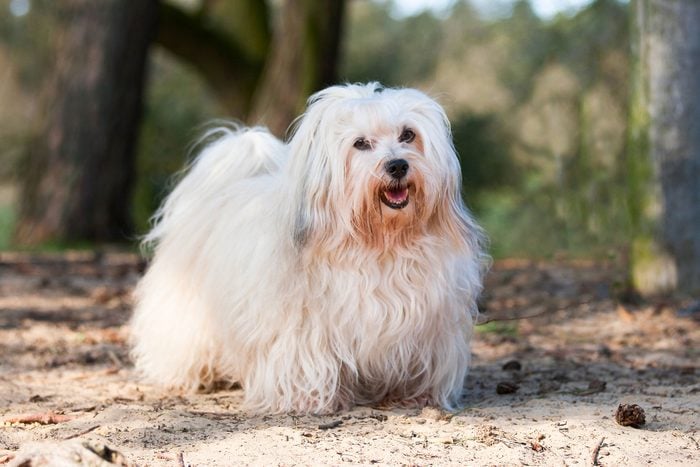
Havanese
Named after the capital of their Cuban homeland, Havanese are friendly extroverts that can be happy almost anywhere, including as apartment-dwelling city slickers. Their long coats require a lot of care unless you choose to keep them trimmed short, but on the upside, they also tend to shed less than breeds with shorter fur.
Havanese aren’t just cheerful little dogs—they also rank among the healthiest dog breeds and can be expected to live for 14 to 16 years. The national breed club requires that any Havanese that has not been spayed or neutered be screened for patellar luxation and problems affecting their hips and eyes. This breed can also be more prone to deafness and a condition called chondrodysplasia, which can lead to dwarfism.
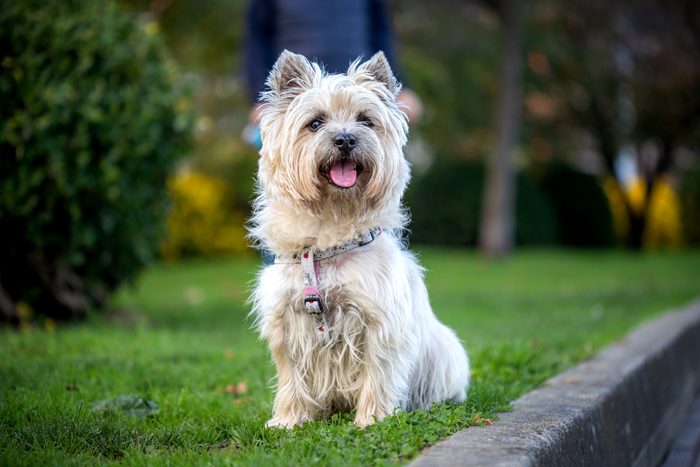
Cairn terrier
For fans of low-maintenance, wire-haired breeds, the cairn terrier is a healthy choice that has a typical life span of 13 to 15 years. These dogs stand only around 10 inches tall, but they are sturdy and tough, which fits their traditional job of hunting everything from rats to foxes. Despite this background, they also make incredibly loyal canine companions who want to spend all of their time with their beloved family members.
The Cairn Terrier Club of America conscientiously recommends a long list of health screenings for breeding these dogs in an attempt to produce the healthiest puppies possible. These include tests for globoid cell leukodystrophy, liver shunts, a kidney ultrasound, an eye exam, a heart exam and X-rays for patellar luxation.
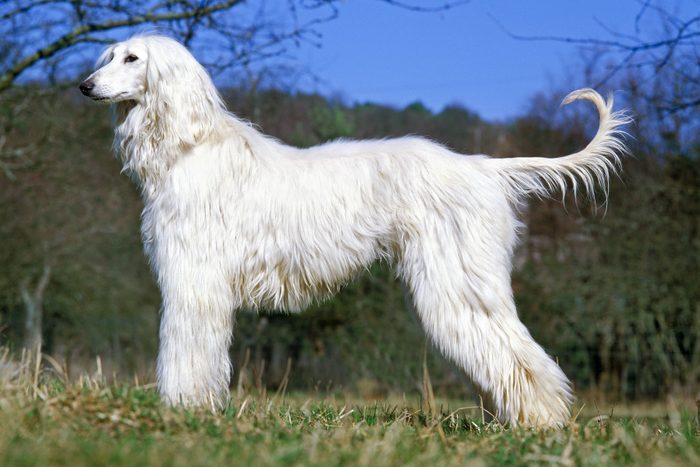
Afghan hound
The regal Afghan hound is still a hound, albeit one with long hair. These dogs love to run, but once that is done for the day, they will happily kick back and relax. An Afghan hound may be reserved one minute, and then transform into a total goofball the next. They’re intelligent and independent, so they will often only obey commands that they think are a good idea in the first place.
For a dog of their size (50 to 60 pounds), Afghan hounds have a surprisingly long life expectancy of 12 to 14 years, with some rare individuals even making it to 18 years. They tend to develop the health problems that would be expected in larger dogs and those that have deep chests, including gastric dilatation-volvulus. The Orthopedic Foundation for Animals recommends that Afghan hounds be screened for hip dysplasia, eye problems and hypothyroidism before they are bred.
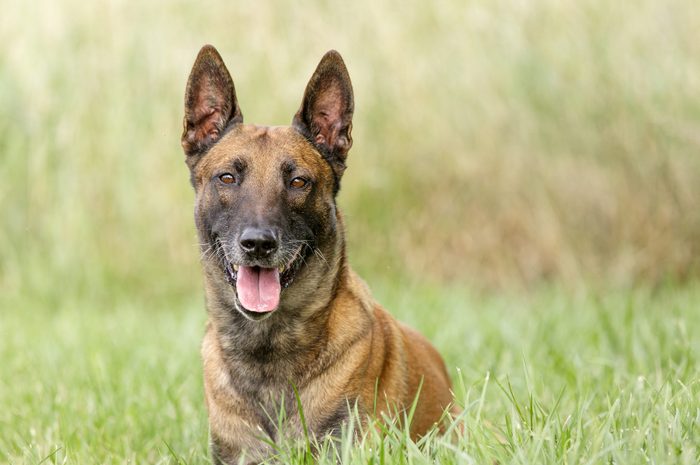
Belgian Malinois
Belgian Malinois have become popular police and military dogs, largely because they are so much healthier than similar breeds like the German shepherd dog. While Belgian Malinois should still be screened for hip dysplasia and elbow dysplasia (as well as eye problems), the incidence of these diseases is lower than in many other breeds. Belgian Malinois can be expected to live for 14 to 16 years, which is remarkable for a dog of their size. This is mostly due to the fact that breeders have put an emphasis on producing healthy dogs.
However, Belgian Malinois are not always the easiest dogs to live with. They are exceedingly loyal, but sometimes only to one person. They also need a lot of exercise and mental work to prevent boredom and the behavior problems that come along with it.
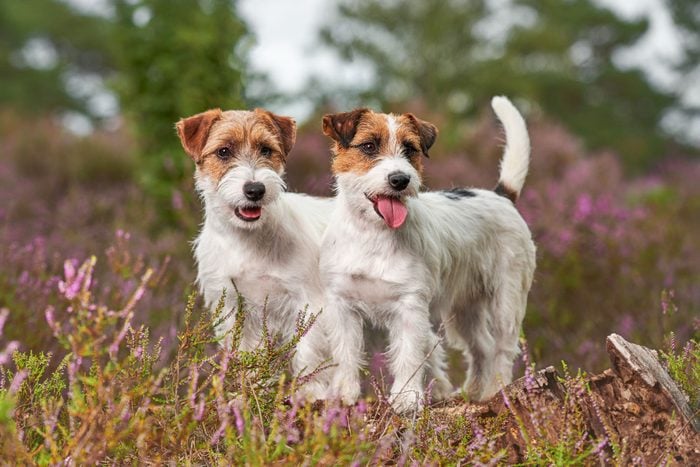
FAQs
How can you keep your dog healthy?
A dog’s health is dependent on many factors, including eating a nutritious diet, getting regular exercise, maintaining a healthy weight, having time to play and use its brain, and staying up to date on preventive veterinary care. That being said, a dog’s breed makeup also plays a role because different breeds are genetically predisposed to certain health problems.
How do you pick the right healthy dog breed for your lifestyle?
To find a dog that will be a good fit with your lifestyle, it’s important to consider its size, age, personality, grooming requirements and exercise needs. Thankfully, healthy breeds and healthy mixed breeds can be found in almost every category—big/small, active/laid-back and shorthaired/longhaired, to name a few.
What dog breed lives the longest?
The Chihuahua is often said to be the breed with the longest life expectancy. Many have lived late into their teens, and some even into their 20s. But good breeding (and a bit of luck) plays a big role in good health. Sadly, some Chihuahuas do not enjoy good health and die young.
Are mixed-breed dogs healthier than purebreds?
It’s hard to make generalizations because “mixed breed” is such a nebulous term. If the mixed breed you’re referring to is simply a cross between two notoriously unhealthy breeds, then no, there’s no reason to expect that they’ll be particularly healthy. True Heinz-57 mutts, on the other hand, can benefit from a lower incidence of inherited disease. In contrast, some purebreds, like the American foxhound, are also much healthier than the average dog.
Sources:
- Orthopedic Foundation for Animals: “Canine Health Information Center certification program”
- American Kennel Club: “Dog Breeds”
- Scientific Reports: “Longevity of companion dog breeds: Those at risk from early death”
- PLoS Genetics: “Genetic prevalence and clinical relevance of canine Mendelian disease variants in over one million dogs”
Why trust us
At Reader’s Digest, we’re committed to producing high-quality content by writers with expertise and experience in their field in consultation with relevant, qualified experts. For this piece on the healthiest dog breeds, Jennifer Coates, DVM, tapped her experience as a veterinarian with more than 25 years of professional experience, and then Caroline Coile, PhD, an award-winning journalist specializing in canine breeds, health and science, gave it a rigorous review to ensure that all information is accurate and offers the best possible advice to readers. We verify all facts and data and backed them with credible sourcing, and we will revisit them over time to ensure they remain accurate and up to date. Read more about our team, our contributors and our editorial policies.

